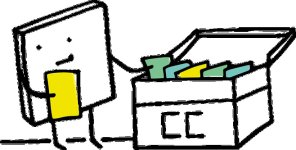Teaching is a rewarding but challenging profession that requires a lot of skills and resources. Besides having the knowledge and passion for teaching, teachers also need some external factors that can support and enhance their teaching effectiveness. This article discusses 10 essential resources that every teacher needs to succeed.
A conducive environment: The physical and social environment in which teachers teach can have a significant impact on their teaching quality and satisfaction. A conducive environment can provide teachers with:
- Adequate space, equipment, and facilities for teaching and learning
- A safe, clean, and comfortable atmosphere for teachers and students
- A supportive, respectful, and collaborative culture among teachers, administrators, parents, and students
A relevant curriculum: The curriculum is the framework that guides the content and objectives of teaching and learning. A relevant curriculum can provide teachers with:
- Clear and consistent standards and expectations for teaching and learning
- Appropriate and updated content and materials that match the students’ needs and interests
- Flexible and diverse options and pathways for teaching and learning
A realistic schedule: The schedule is the timetable that organises the time and sequence of teaching and learning. A realistic schedule can provide teachers with:
- A balanced and manageable workload that suits their abilities and needs
- A reasonable and predictable pace that allows them to cover the curriculum effectively
- A sufficient and appropriate time allocation for each lesson, activity, or assessment
A detailed syllabus: The syllabus is the document that outlines the specific topics, activities, and assessments for each course or subject. A detailed syllabus can provide teachers with:
- A clear and comprehensive overview of what they will teach and how they will teach it
- A specific and measurable set of learning outcomes and objectives for each topic, activity, or assessment
- A consistent and transparent basis for evaluating students’ progress and performance
A well-designed lesson plan: The lesson plan is the tool that describes the steps and strategies for delivering each lesson. A well-designed lesson plan can provide teachers with:
- A logical and coherent structure that guides the flow of information from the teacher to the students
- A variety of methods and techniques that suit the content, objectives, and students of each lesson
- A set of procedures and materials that facilitate the implementation of each lesson
An informative teaching note: The teaching note is the material that contains the key information or points that teachers will present or explain to students. An informative teaching note can provide teachers with:
- A concise and accurate summary of the content or concepts of each lesson
- A clear and relevant explanation or illustration of the content or concepts of each lesson
- A handy and accessible reference or resource for teaching or reviewing each lesson
An effective teaching aid: The teaching aid is the object or device that supports or enhances the presentation or delivery of information. An effective teaching aid can provide teachers with:
- A visual or auditory stimulus that attracts students’ attention or interest
- A concrete or abstract representation that simplifies or clarifies complex or abstract information
- An interactive or experiential opportunity that involves students in active learning
A reliable roll-call list: The roll call list is the record that tracks the attendance or absence of students in each class. A reliable roll call list can provide teachers with:
- An accurate account of who is present or absent in each class
- An easy way to monitor students’ attendance patterns or problems
- important data for evaluating students’ participation or performance
A fair grading system: The grading system is the method that measures students’ achievement or progress based on their performance in various assessments. A fair grading system can provide teachers with:
- A consistent criteria for scoring students’ work based on their quality rather than quantity
- A transparent process for calculating students’ grades based on their scores rather than preferences
- constructive feedback for improving students’ strengths rather than weaknesses
A strong authority: authority is the power or right that teachers have to control or influence students’ behaviour or actions. A strong authority can provide teachers with:
- respect and recognition from students as their leader or mentor
- discipline and order in the classroom as well as outside of it
- responsibility and accountability for students’ well-being and success
These are some of the resources that every teacher needs to succeed. However, these resources are not enough by themselves. Teachers also need to have the skills, passion, and personality that make them good teachers. Therefore, teachers should always reflect on their own strengths and weaknesses and seek ways to improve themselves as well as their resources.
Last edited:


